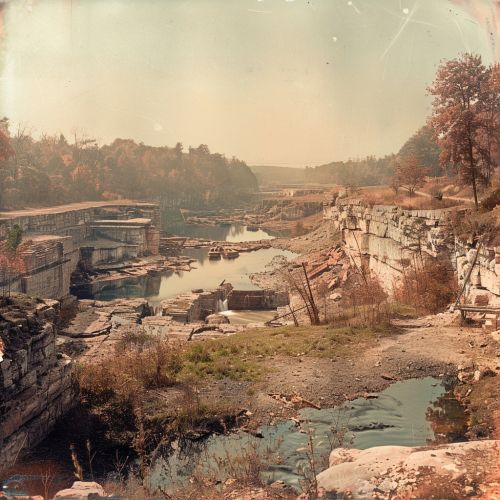Historic Landscape Characterisation
Introduction
Historic Landscape Characterisation (HLC) is a methodological approach used in landscape archaeology and cultural heritage management. It aims to identify, describe, and interpret the historic and archaeological dimensions of the present-day landscape. HLC is a tool for understanding the historical development of a landscape, its present character, and how it may change in the future.


Background
The concept of HLC emerged in the United Kingdom in the 1990s, initiated by the English Heritage and the Countryside Commission. It was developed as a response to the need for a comprehensive understanding of the historic environment, which was often overlooked in planning and management processes. HLC provides a holistic perspective on the landscape, considering all its elements and their interrelationships over time.
Methodology
HLC methodology involves the systematic analysis of various data sources, including aerial photographs, maps, archaeological surveys, and historical documents. These sources are used to identify and classify distinct landscape character areas, each with its unique combination of physical and cultural attributes.
The process of HLC can be divided into several stages:
- Data collection: Gathering and reviewing all available sources of information about the landscape.
- Analysis: Identifying and classifying distinct landscape character areas based on their physical and cultural attributes.
- Interpretation: Understanding the historical development of each character area and its contribution to the overall landscape character.
- Presentation: Producing maps, reports, and other outputs that communicate the results of the HLC study.
Applications
HLC has a wide range of applications in landscape archaeology, cultural heritage management, planning, and environmental assessment. It can inform the development of conservation management plans, guide the design of new developments, and contribute to the understanding of landscape change and its implications.
In the field of archaeology, HLC can provide insights into the spatial distribution of archaeological sites and features, their relationship with the wider landscape, and the processes that have shaped the landscape over time.
In cultural heritage management, HLC can inform the identification and assessment of heritage assets, their significance, and their vulnerability to change. It can also contribute to the development of strategies for the conservation and enhancement of the historic environment.
In planning and environmental assessment, HLC can provide a robust evidence base for the consideration of the historic environment in decision-making processes. It can inform the assessment of the potential impacts of proposed developments on the historic environment and the identification of appropriate mitigation measures.
Challenges and Criticisms
While HLC has been widely adopted and has made significant contributions to the understanding and management of the historic environment, it has also been subject to criticism. Some of the main challenges and criticisms associated with HLC include:
- Subjectivity: The process of identifying and classifying landscape character areas involves a degree of subjectivity, which can lead to inconsistencies in the results of HLC studies.
- Complexity: The historic landscape is a complex system of interrelated elements and processes, which can be difficult to capture and represent in a HLC study.
- Temporality: The historic landscape is not a static entity, but a dynamic system that is constantly changing. This temporal dimension can be challenging to incorporate into a HLC study.
- Accessibility: The outputs of HLC studies, such as maps and reports, can be difficult to understand and use for non-specialists.
Despite these challenges, HLC remains a valuable tool for the understanding and management of the historic environment. It provides a holistic perspective on the landscape, considering all its elements and their interrelationships over time.
See Also
- Landscape Archaeology
- Cultural Heritage Management
- Conservation Management Plan
- Environmental Impact Assessment
